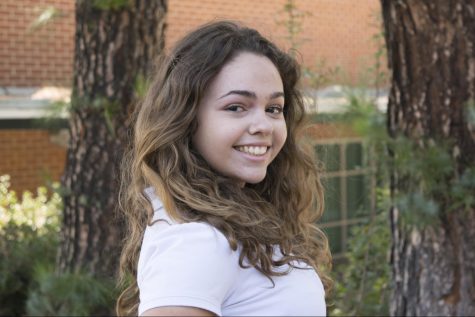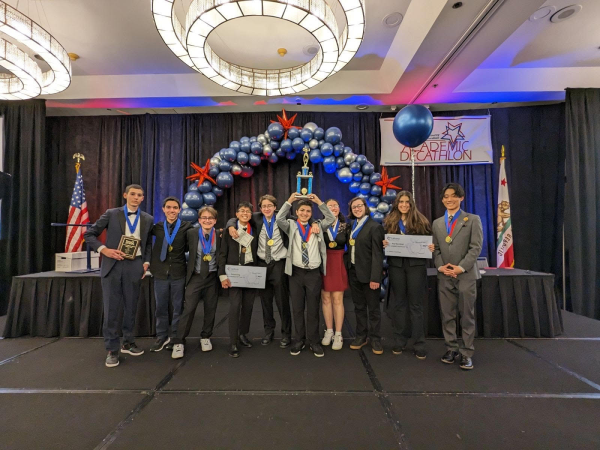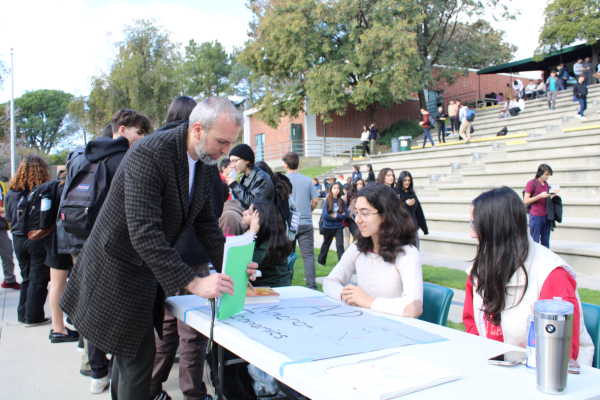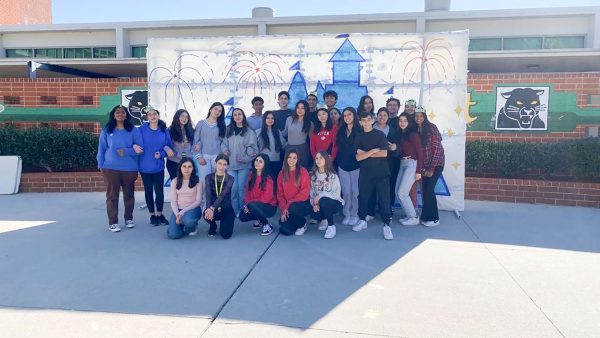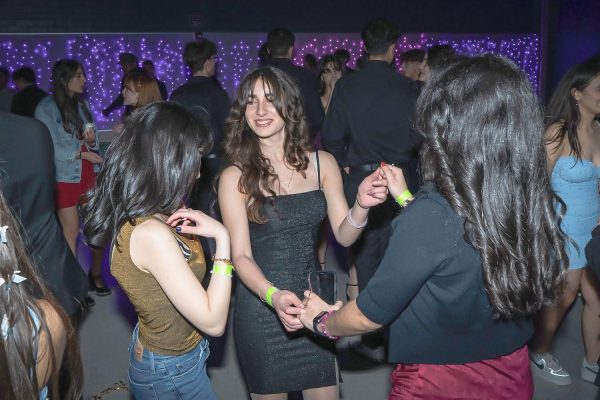Local rhythmic gymnasts find the sport challenging, yet rewarding
Gymnasts stretching.
Fourteen-year old Jodie Mendoza has been doing rhythmic gymnastics at Rhythmic Olympica in Glendale for six years now, and the Olympics is her ultimate goal. “It’s every girl’s dream to go, and it happens only every four years, so it’s really rare,” she said. Mendoza, along with the rest of her teammates, trains from four to four and a half hours every day, six days a week, at this gym.
The Rhythmic Olympica gym features high ceilings, which are needed for working with apparatus. The apparatus includes a rope, ball, hoop, clubs and ribbon. Gymnasts can either have a group routine or an individual routine.
Young athletes often find the training the most challenging aspect of any sport. “Training is really hard and it keeps getting harder every day,” said twelve-year old Tamara Chinivizyan. She started the sport when she was seven years old and has been competing for four years. Rhythmic gymnasts are known for their flexibility, and to maintain that flexibility they must stretch every day, whenever and wherever they can, even outside of class.
Training for something this serious at such a young age comes with its disadvantages, such as barely having any social time and the difficulty of keeping up with homework. However, 14-year-old Anastasia Papades does most of her homework during school hours and finds that she is able to manage her time wisely.

Gymnast practicing her ball routine
15-year-old Sonia Petrossian, on the other hand, was not that fortunate. Petrossian is a former Clark student who had to leave Clark in the middle of her sophomore year last year. The demands of both her school work and gymnastics was just too much to handle, and she had to make the decision to leave Clark, to focus more on her dream. She knew that spending time away from practice was not an option. “When I’m not training, all I think about is training,” she said.
Although Petrossian had to make such a bold choice, she is not the only who has had a hard time keeping up with the demands of school and gymnastics. Two of Rhythmic Olympica’s coaches, twenty-year old Michelle Carreon and seventeen-year old Natalie Bazikyan, had to make a similar decision.
Carreon and Bazikyan are both former Clark students and had difficulty managing their time. Since their first gymnastics class of the day started right after school, they had to be picked up from their bus stops, change into their gym wear in their cars, eat a small snack, and rush off to class every single day. By the time they got home and ate dinner, they barely had enough time to do their homework and spend time with their families. Once it got to the end of their sophomore years, they had both decided that it was time for them to stop competing.
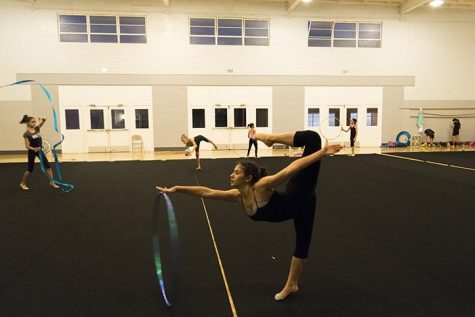
Gymnast practicing her ribbon routine.
However, soon after they quit they began to coach the younger gymnasts.
“It just happened,” said Carreon. “Competitions were too stressful, but I wanted to continue the sport somehow.” Carreon, along with coaching, now attends Santa Monica College. Bazikyan started coaching for similar reasons, and when asked if Clark really “ruined” her chances at the future she wanted, she said that it actually helped her in many ways.
“Even though Clark’s work was a lot, it really prepared me a lot for college, which is something that I’m very thankful for,” said Bazikyan, who now attends Pasadena Community College. Carreon and Bazikyan said that knowing that that they can coach kids, helping them become the best they can be, makes them proud to be coaches.
As a teenager, or a preteen, most kids are often out with their friends, but not future Olympians-in-training. Most of them have friends during school, but after that they have absolutely no time.
Some may ask, is it worth it? Giving up a normal childhood for pain, sweat and tears? Many Rhythmic Olympica gymnasts think so. “I don’t have a lot of time for friends, and it’s kind of sad,” said thirteen-year old Anahit Hayrapetyan. “But I love this sport, so it’s worth it.”




